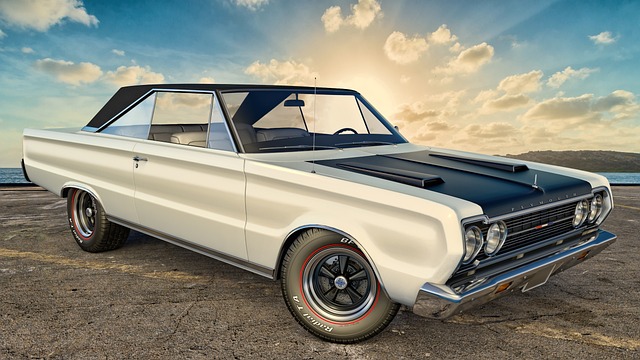Driving in Belgium: Rules and Regulations

Belgium, with its picturesque cities, charming countryside, and well-connected road networks, is a popular destination for travelers exploring Europe by car. However, driving in a foreign country can be daunting if you’re unfamiliar with the local rules and regulations. To ensure a smooth and safe journey, it’s essential to understand Belgium’s driving laws, road signs, and etiquette. In this guide, we’ll cover everything you need to know about driving in Belgium, from licensing requirements to parking rules.
1. Licensing Requirements
Before hitting the road in Belgium, make sure you meet the necessary licensing requirements:
- Valid Driver’s License: If you hold a valid driver’s license from an EU/EEA country, you can drive in Belgium without any additional permits. Non-EU visitors may use their home country license for up to 185 days within a calendar year. After that period, you’ll need to exchange your license for a Belgian one or apply for an International Driving Permit (IDP), depending on your nationality.
- Minimum Age: The legal driving age in Belgium is 18 years old. However, some rental car companies require drivers to be at least 21 or 23 years old, so check their policies before booking.
- Insurance: All vehicles must have valid third-party liability insurance. Ensure your policy covers you for driving in Belgium, especially if you’re crossing borders.
2. Road Rules and Etiquette
Belgian roads are generally well-maintained, but navigating them requires adherence to specific rules and practices:
Speed Limits
- Urban Areas: 50 km/h (31 mph)
- Outside Built-Up Areas: 90 km/h (56 mph)
- Highways/Motorways: 120 km/h (75 mph)
Note that speed checks are frequent, and fines for speeding can be steep. Always pay attention to electronic signs displaying variable speed limits based on traffic conditions.
Right of Way
- Vehicles coming from the right typically have priority unless otherwise indicated by signs or signals. This rule applies even at roundabouts, where entering traffic has the right of way unless marked differently.
- At intersections without signage, yield to vehicles approaching from the right.
Seat Belts and Child Safety
- Seat belts are mandatory for all passengers, both front and rear.
- Children under 12 years old or shorter than 1.35 meters (4’5”) must use appropriate child restraints.
Mobile Phones and Alcohol
- Using handheld mobile phones while driving is strictly prohibited. Hands-free devices are allowed, but texting or browsing is not.
- The blood alcohol limit is 0.05% (lower than in many other countries). For novice drivers (less than two years of experience) and professional drivers, the limit drops to 0.02%.
Emergency Lane Usage
- On highways, the emergency lane is strictly reserved for emergencies and breakdowns. Using it as an extra lane during congestion is illegal and dangerous.
3. Toll Roads and Vignettes
Unlike neighboring countries such as France or Italy, Belgium does not have toll roads. Instead, motorway usage is funded through general taxation. However, keep in mind:
- Some tunnels, like those in Brussels, charge toll fees.
- If you plan to drive into Luxembourg or Germany, check whether a vignette (toll sticker) is required.
4. Parking Regulations
Parking in Belgian cities can be challenging due to limited space and strict enforcement. Here are some tips:
- Look for blue zones, which indicate paid parking areas. You’ll need to purchase a ticket from nearby machines and display it on your dashboard.
- Residential areas often have permit-only parking; avoid these unless you have authorization.
- Many towns offer underground parking garages (parkings souterrains), which are convenient but can be expensive.
- Always obey no-stopping and no-parking signs to avoid hefty fines or towing.
5. Roundabouts and Traffic Circles
Roundabouts are common in Belgium and play a crucial role in managing traffic flow. Remember:
- Give way to vehicles already in the roundabout.
- Use your indicators to signal when exiting.
- Be cautious of cyclists and pedestrians sharing the space.
6. Environmental Zones
Several Belgian cities, including Brussels, Antwerp, and Ghent, have implemented Low Emission Zones (LEZs) to reduce air pollution. These zones restrict access to high-emission vehicles. Key points include:
- Vehicles must comply with specific Euro emission standards to enter LEZs.
- Non-compliant vehicles face fines or bans.
- Register your vehicle online in advance if you plan to drive in these areas.
7. Emergency Numbers and Breakdown Assistance
In case of an accident or breakdown, knowing the right numbers can save time and stress:
- Emergency Services: Dial 112 for police, fire, or medical assistance.
- Breakdown Assistance: Contact your insurance provider or roadside assistance service. Popular organizations include Touring Club Belgium (TCB) and Royal Automobile Club of Belgium (RACB).
Always carry a warning triangle and reflective vest in your vehicle, as they are mandatory in case of breakdowns on highways or unlit roads.
8. Navigating Belgian Highways
Belgium boasts an extensive network of highways (autoroutes/autosnelwegen), making long-distance travel efficient. Tips for highway driving:
- Pay attention to overhead gantries displaying real-time information about traffic, weather, and lane closures.
- Follow lane discipline—use the left lane only for overtaking.
- Watch out for cyclists and farm vehicles on rural roads, especially in Flanders and Wallonia.
9. Multilingual Signage
Belgium has three official languages: Dutch (Flemish), French, and German. Road signs vary depending on the region:
- In Flanders (northern Belgium), signs are in Dutch.
- In Wallonia (southern Belgium), signs are in French.
- In the east, near the German border, signs may be bilingual (French/German).
- Brussels uses both Dutch and French.
While language differences might seem confusing, road signs follow standard European designs, making navigation straightforward.



